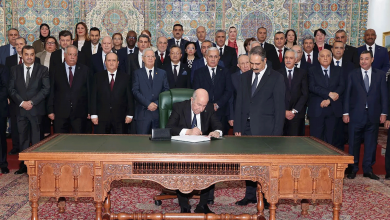Algeria – The Algerian railway sector achieved significant milestones in 2024, marked by the establishment of the Public Railway Construction Conglomerate. This reflects the nation’s commitment to enhancing infrastructure and developing transport services, continuing progress initiated since 2020.
Guided by President Abdelmadjid Tebboune’s ambitious strategy, Algeria’s railway sector is advancing towards improving citizens’ quality of life and transforming transport and infrastructure, solidifying its position as a regional leader.
Landmark Achievement: The Public Railway Conglomerate
One of the key achievements of 2024 was the creation of the Public Railway Construction Conglomerate. This decision, approved by the State Contribution Council in May and formalized through a founding assembly in July, aims to oversee large-scale railway expansion projects and bolster economic and social development.
The conglomerate comprises four specialized companies:
- Setirail – Railway technical studies and engineering.
- Infrarail – Railway infrastructure.
- Railelectr – Railway electrification.
- Infrafer – Basic railway structures.
This initiative aligns with Algeria’s ambitious plan to connect its northern and southern regions via an advanced railway network. Key projects include the eastern and western mining lines and the Touggourt-Hassi Messaoud line (Ouargla).
Launch of Major Projects
The National Agency for Railway Studies and Investment Monitoring (ANESRIF) spearheaded several projects in 2024, accelerating ongoing developments.
Western Mining Line (Béchar-Gâra Djebilet)
Work on this critical 950 km line progressed rapidly, with initial segments expected to be operational by 2025 and full completion ahead of the March 2026 deadline.
Eastern Mining Line (Annaba-Tebessa)
Modernization of this 422 km line showed substantial progress. Key milestones included completing:
- The Jebel El-Onk to Oued Kebrit section (151 km).
- The connection of the Blad El-Hadba mine to the railway (23 km).
- Significant advances on the northern segment linking Annaba and Bouchegouf (54 km).
High Plateaus Corridor
Construction began on the final segment between Tissemsilt and western Tiaret. Spanning 1162 km from Tebessa in the east to Sidi Bel Abbès in the west, the corridor traverses 22 provinces.
Touggourt-Hassi Messaoud Line
This 154 km project neared completion, with service expected to commence soon.
Storage and Safety Initiatives
To enhance grain storage and transportation, ANESRIF initiated a new program in 2024 to connect 16 grain silos to the railway network, complementing an emergency plan for connecting seven silos.
Additionally, a broad initiative to eliminate railway-road crossings was launched. Bridges and tunnels are being constructed at all intersections to reduce accidents and protect assets.
Modernizing the Capital’s Network
As part of efforts to upgrade Algiers’ railway system, three lines at the Algiers train station were revamped. This included replacing foundational layers, installing new signaling systems, and electrifying the lines for the first time.
A Regional and International Impact
2024 also marked the resumption of railway services between Algeria and Tunisia after a 30-year hiatus. This initiative facilitates travel between the two countries, with the first commercial train departing Tunis on August 11.
Domestically, efforts to rehabilitate and maintain existing lines continued, with over 41 billion DZD allocated for upgrades. The modernization program also included developing 80 passenger stations and renewing signaling and communication systems.
Expanding the Network
Thanks to sustained momentum since 2020, Algeria’s railway network has grown to 4787 km, with plans to reach 6500 km upon completing ongoing projects and a target of 15,000 km by 2030.
International Recognition
The International Union of Railways commended Algeria for its innovative solutions and ambitious railway projects, highlighting its remarkable progress despite geographic challenges.
For more articles, visit DZWATCH.DZ.
Author: Nor-Eleslam




